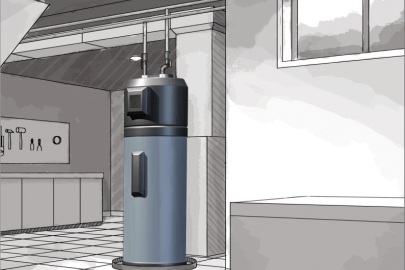Best Methods to Maintain Your Home's Hot Water System Successfully
Best Methods to Maintain Your Home's Hot Water System Successfully
Blog Article
We've discovered this post involving How to Maintain a Hot Water Heater in a Few Simple Steps down the page on the net and reckoned it made perfect sense to talk about it with you here.

Hot water is important for day-to-day convenience, whether it's for a refreshing shower or washing meals. To ensure your warm water system runs effectively and lasts longer, routine maintenance is essential. This article gives useful tips and understandings on how to keep your home's hot water system to avoid disturbances and costly fixings.
Introduction
Keeping your home's hot water system could seem daunting, however with a few basic actions, you can ensure it runs smoothly for many years to come. This guide covers every little thing from comprehending your warm water system to DIY upkeep tips and understanding when to employ specialist help.
Relevance of Maintaining Your Warm Water System
Routine maintenance not only prolongs the life-span of your hot water system yet also ensures it runs efficiently. Ignoring upkeep can result in lowered efficiency, higher energy expenses, and also early failure of the system.
Indications Your Warm Water System Needs Upkeep
Knowing when your warm water system requires attention can avoid significant issues. Watch out for indicators such as irregular water temperature, weird sounds from the heater, or rustic water.
Comprehending Your Warm Water System
Prior to diving right into maintenance tasks, it's valuable to comprehend the standard parts of your warm water system. Typically, this includes the water heater itself, pipes, anode rods, and temperature level controls.
Month-to-month Upkeep Tasks
Routine regular monthly checks can assist capture small concerns prior to they rise.
Purging the Hot Water Heater
Purging your hot water heater gets rid of debris build-up, boosting efficiency and prolonging its life.
Checking and Replacing Anode Rods
Anode rods prevent corrosion inside the tank. Inspecting and replacing them when worn out is critical.
Inspecting and Adjusting Temperature Settings
Adjusting the temperature level setups guarantees optimum performance and safety.
DIY Tips for Maintenance
You can perform several upkeep tasks yourself to keep your hot water system in leading problem.
Looking for Leakages
Regularly inspect pipelines and links for leakages, as these can result in water damage and higher bills.
Testing Stress Alleviation Valves
Checking the pressure relief valve guarantees it operates appropriately and stops extreme pressure buildup.
Shielding Pipelines
Protecting hot water pipes reduces warmth loss and can conserve energy.
When to Call a Professional
While DIY upkeep is helpful, some issues require specialist expertise.
Complicated Issues Calling For Professional Assistance
Instances include significant leakages, electrical troubles, or if your water heater is constantly underperforming.
Regular Expert Maintenance Conveniences
Expert maintenance can consist of extensive assessments, tune-ups, and making certain conformity with safety and security requirements.
Conclusion
Normal maintenance of your home's warm water system is crucial for effectiveness, long life, and expense savings. By complying with these suggestions and recognizing when to look for specialist help, you can make certain a reputable supply of hot water without unforeseen disruptions.
Water Heater Maintenance Tips
Test the TPR Valve
Shut off the power and the cold-water supply valve. Place a bucket under the pipe connected to the temperature-pressure-release (TPR) valve on the top or side of the tank. (This valve opens if the tank pressure gets too high.) Lift the valve’s tab to let some water out, then let go. If water keeps flowing, drain the tank partway, unscrew the old valve with a pipe wrench, and install a new one. Check the Anode Rod
Put a hose to the tank’s drain cock and let out a few gallons of water. Now fit a 1 1/16-inch socket onto the rod’s hex head on top of the heater (or under its top plate) and unscrew the rod. If it’s less than ½ inch thick or coated with calcium, buy a new one, wrap its threads with Teflon tape, put it back in the tank, and tighten securely. Use this segmented rod if headroom above the tank is limited. Drain the Tank and Wash Out Sediment
Drain the remaining water in the tank into the bucket, then stir up the sediment on the tank’s bottom by briefly opening the cold-water supply valve. Drain and repeat until clean water comes out of the hose. Close the drain cock, refill the tank, and turn its power back on. Adjust the Temperature
Find the temperature dial on the side of the tank and unscrew its cover. Adjust the dial to 120 degrees using a flathead screwdriver. For every 10 degrees the temperature is lowered, you can expect to save up to 5 percent in energy costs. Turn the water heater off or the thermostat down to its lowest setting if you plan to be away from home for more than three days. Insulate the Pipes
Buy some self-sticking 3/8-inch-thick foam pipe insulation that matches the pipes’ diameter. Slide the foam over the hot-and cold-water pipes as far as you can reach. Insulating the cold-water pipe prevents condensation in summer. Peel the tape and squeeze the insulation closed. If the pipe is 6 inches or less from the flue, cover it with 1-inch-thick unfaced fiberglass pipe wrap. https://www.thisoldhouse.com/plumbing/21016402/how-to-maintain-a-water-heater

I recently found that blog post about Tips on Maintaining a Water Heater when doing a lookup on the web. Enjoyed reading our posting? Please share it. Help someone else find it. We take joy in your readership.
Call Today Report this page